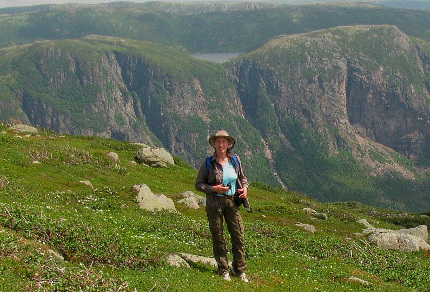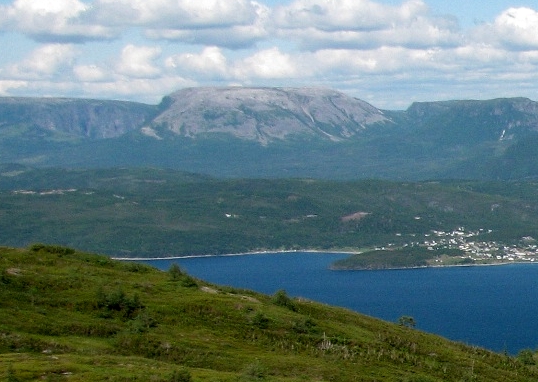
Gros Morne Mountain seen from Partridgeberry Hill, Gros Morne National Park (© Magi Nams)
After three days of exploring Newfoundland’s Northern Peninsula (next post), Vilis and I returned to Gros Morne National Park to celebrate Canada Day (July 1) by climbing Newfoundland’s second highest peak, Gros Morne Mountain, the ‘big alone.’ An isolated outpost of Arctic environment far south of the mainland Arctic, Gros Morne Mountain is home to arctic hares and rock ptarmigan, classic Arctic species. At 806 metres elevation and located adjacent to the Gulf of St. Lawrence, the peak is frequently cloaked in cloud and mist, but was clear for climbing on our chosen day.
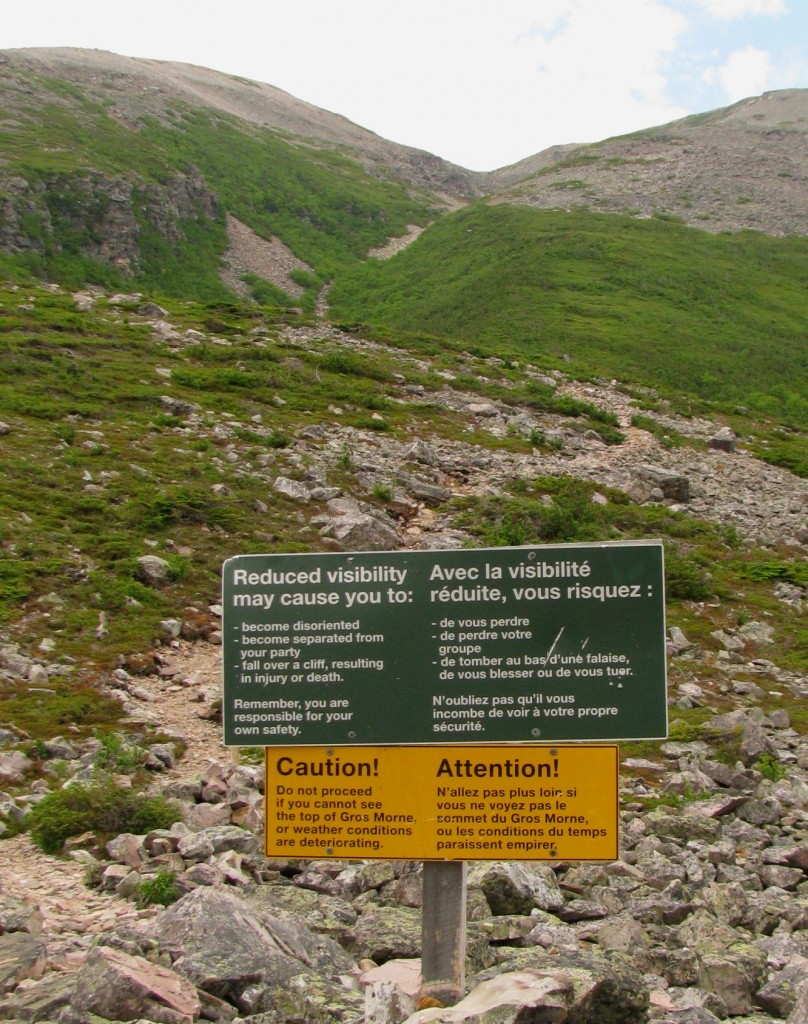
Warning Sign at base of Gros Morne Mountain (© Magi Nams)
At 0800, we slapped on sunscreen, hats, and daypacks and set off on the 16-kilometre trail. The first (and last) quarter of the hike is a straight in-out to a viewing platform at the base of the climb. The remaining half is a strenuous loop that climbs to the peak’s summit and circles around the back of the mountain before descending back to the viewing platform.
The Newfoundland dawn chorus was in full swing as we hiked through sheltered woodlands and over bogs on the gradual rise to the base of the mountain at 320 metres. I spotted or heard robins, magnolia and black-throated green warblers, downy and hairy woodpeckers, an American redstart, Swainson’s and hermit thrushes, northern waterthrushes, ruby-crowned kinglet, boreal chickadee, alder and yellow-bellied flycatchers, and white-throated and Lincoln’s sparrows.
From the viewing platform at the peak’s base, we looked out over serene ponds and wetlands and up to the boulder-strewn access to the summit, called The Gully. This is a V-notch of shattered rubble on the southwest slope of the mountain. En route to The Gully, we encountered a sign warning us to not proceed if we couldn’t see the top of the mountain. With blue, cloud-tufted sky above the peak, we tramped past the sign and onward to The Gully. Sweat poured off us as we climbed 400 knee-straining metres over frost-shattered scree and boulders, the gentle forest trail and blue, reaching finger of Bonne Bay far below us.
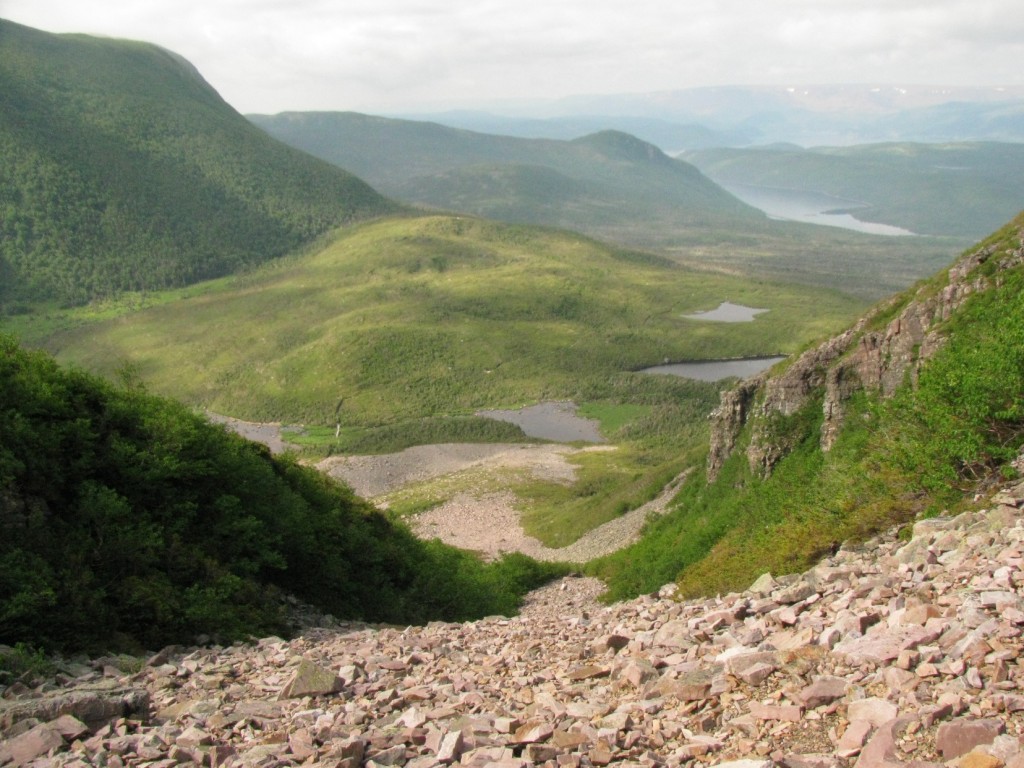
The Gully, Gros Morne Mountain (© Magi Nams)
Once out of The Gully, we hiked a much gentler, rock-strewn slope to the summit of Gros Morne, the entire landscape a sea of shattered stone called ‘felsenmeer.’ We saw arctic hare droppings but no hares, and no rock ptarmigan, so dipped on the Arctic species I’d hoped to observe. However, robins and horned larks flitted over the harsh landscape, which reminded me of polar desert I’d seen in Canada’s High Arctic islands. Beyond the summit, we paused to eat our lunches in a patch of wind-swept herbs and dwarf shrubs, our view the sweeping panorama of Long Range Mountains’ rolling peaks and the blue of Ten Mile Pond and high altitude lakes caught on mountain lips.

Vilis amid Felsenmeer on Summit of Gros Morne Mountain (© Magi Nams)
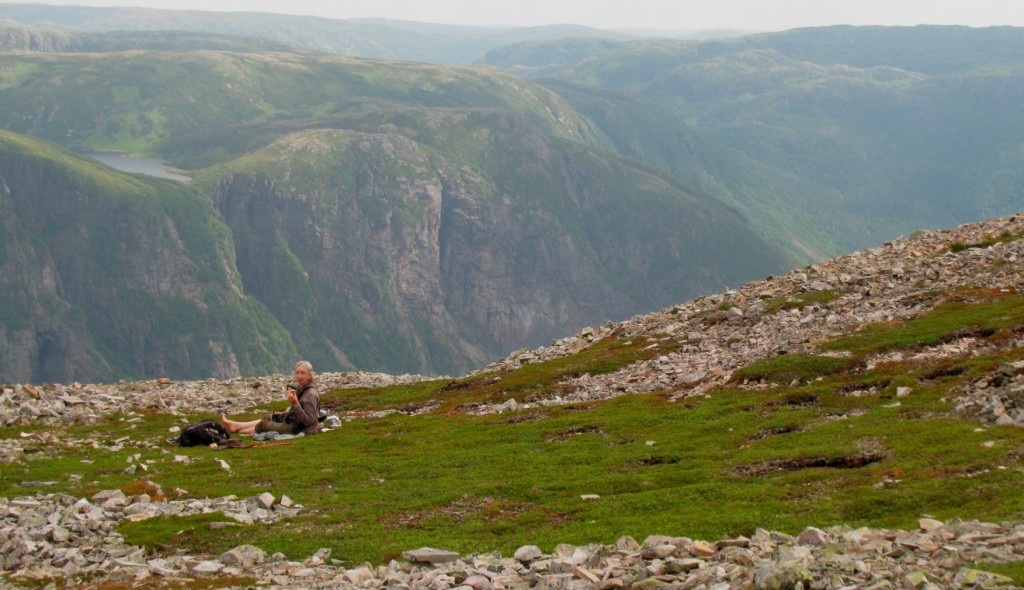
Lunch Break on Gros Morne Mountain (© Vilis Nams)
In early afternoon, we hiked round the back of the peak, dropping in elevation and leaving the ground-hugging plants of the summit for thickets of dwarf birch and alder. Vilis spotted a family of willow ptarmigan on the trail, the chicks and adults quickly disappearing among dense ferns and dwarf birch.
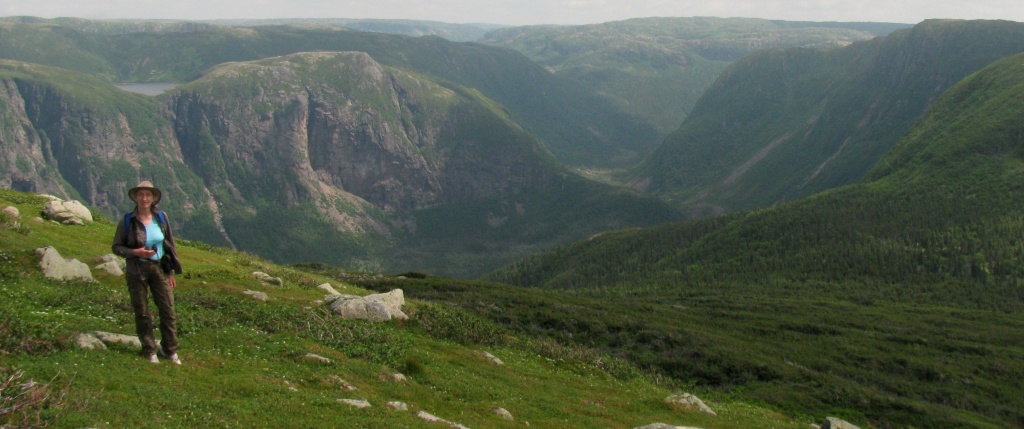
Here I am on the back side of Gros Morne Mountain (© Vilis Nams)
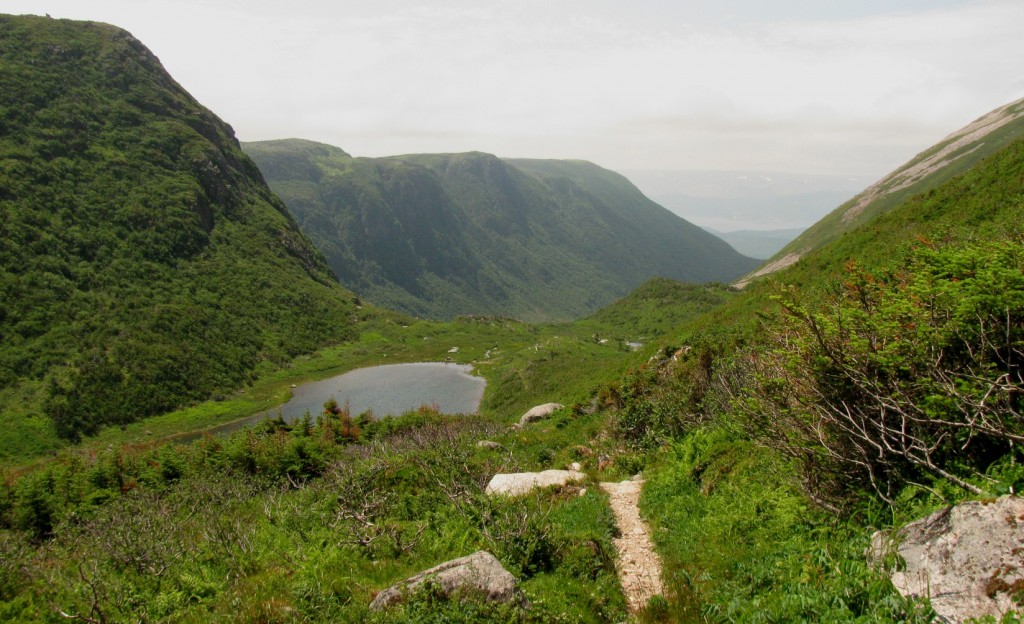
Ferry Gulch, Gros Morne Mountain (© Magi Nams)
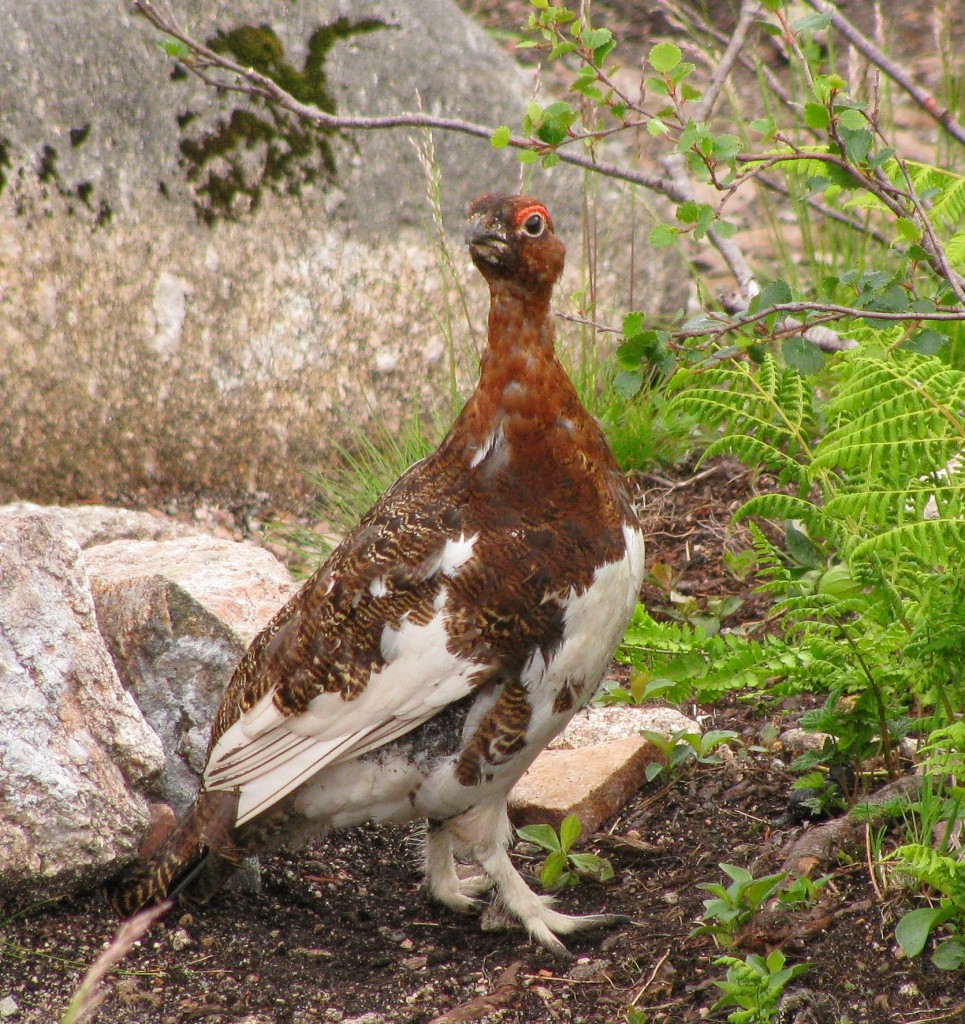
Male Willow Ptarmigan, Gros Morne Mountain (© Magi Nams)
The remainder of the loop hike was a tiring trek over scree and along a boulder-clogged trail on the side of Ferry Gulch. I noted a male blackpoll warbler singing agitatedly from atop a shrub, and heard the voices of a winter wren, olive-sided flycatcher, golden-crowned kinglet, and Tennessee warbler. We hiked down to the viewing platform and back through the woods, then celebrated our success with ice cream treats in Rocky Harbour – strawberry sundae for me; banana split for Vilis. Happy Birthday, Canada!

